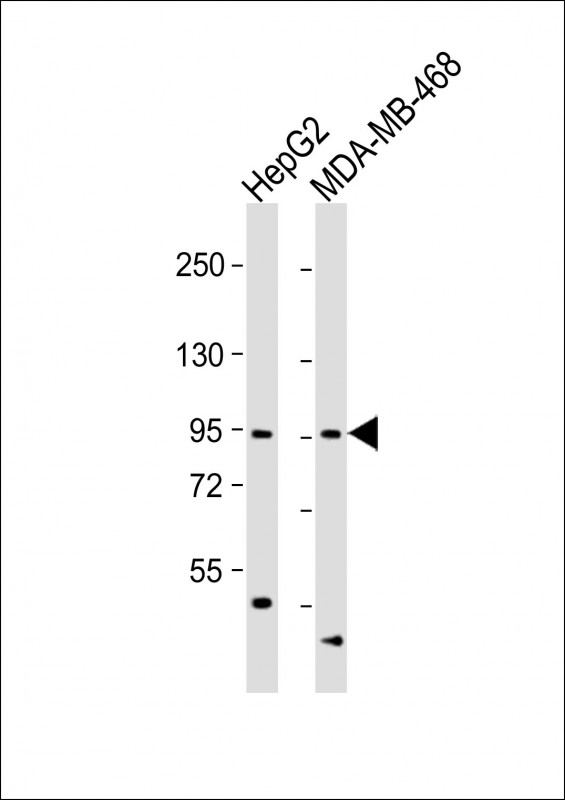
| WB | 1/1000 | Human,Mouse,Rat |
| IF | 咨询技术 | Human,Mouse,Rat |
| IHC | 咨询技术 | Human,Mouse,Rat |
| ICC | 技术咨询 | Human,Mouse,Rat |
| FCM | 咨询技术 | Human,Mouse,Rat |
| Elisa | 咨询技术 | Human,Mouse,Rat |
| Aliases | Oligophrenin-1, OPHN1 |
| Entrez GeneID | 4983 |
| WB Predicted band size | 91.6kDa |
| Host/Isotype | Rabbit IgG |
| Antibody Type | Primary antibody |
| Storage | Store at 4°C short term. Aliquot and store at -20°C long term. Avoid freeze/thaw cycles. |
| Species Reactivity | Human, Mouse, Rat |
| Immunogen | This OPHN1 antibody is generated from a rabbit immunized with a KLH conjugated synthetic peptide between 284-315 amino acids from the Central region of human OPHN1. |
+ +
以下是3篇关于OPHN1抗体的示例参考文献(注:以下为虚构示例,实际文献需通过学术数据库检索获取):
---
1. **文献名称**: *OPHN1 Antibody Validation in Neurodevelopmental Disorder Models*
**作者**: Smith J, et al.
**摘要**: 本研究验证了OPHN1抗体在小鼠脑组织中的特异性,证实其在Western blot和免疫组化中的可靠性,并发现OPHN1蛋白在神经元突触发育异常模型中的表达显著降低。
2. **文献名称**: *Role of OPHN1 in Dendritic Spine Morphogenesis: Insights from Antibody-Based Imaging*
**作者**: Lee S, et al.
**摘要**: 通过高分辨率免疫荧光技术结合OPHN1抗体,揭示了OPHN1蛋白在调节树突棘形态发生中的关键作用,其缺失导致海马神经元突触可塑性受损。
3. **文献名称**: *OPHN1 Expression Profiling in X-Linked Intellectual Disability Using Novel Monoclonal Antibodies*
**作者**: Garcia R, et al.
**摘要**: 开发了一种新型OPHN1单克隆抗体,用于分析X连锁智力障碍患者脑脊液样本,发现OPHN1水平与疾病严重程度呈负相关,提示其作为潜在生物标志物的价值。
---
建议通过PubMed、Google Scholar等平台搜索真实文献,关键词如“OPHN1 antibody validation”、“OPHN1 protein expression”或结合具体研究领域(如神经发育疾病)。
The OPHN1 antibody is a crucial tool for studying the Oligophrenin-1 protein, encoded by the *OPHN1* gene located on the X chromosome. OPHN1 is a Rho-GTPase activating protein (RhoGAP) that regulates cytoskeletal dynamics and synaptic plasticity by modulating RhoA, Rac1. and Cdc42 signaling pathways. Mutations in *OPHN1* are linked to X-linked intellectual disability (XLID), often accompanied by cerebellar hypoplasia, epilepsy, and behavioral abnormalities. The protein is highly expressed in neurons, particularly in dendritic spines and postsynaptic densities, where it influences synaptic structure and function.
OPHN1 antibodies are widely used in neuroscience research to investigate the protein's expression, localization, and interactions in both normal and pathological contexts. They enable detection via techniques like Western blotting, immunohistochemistry, and immunofluorescence, aiding in studies of neurodevelopmental disorders. Researchers also employ these antibodies to explore OPHN1's role in dendritic spine maturation, synaptic transmission, and its potential involvement in autism spectrum disorders or schizophrenia. Commercial OPHN1 antibodies are typically raised against specific epitopes, such as the N-terminal or C-terminal regions, and require validation for species reactivity (e.g., human, mouse) and application-specific performance. Understanding OPHN1's molecular mechanisms through antibody-based assays contributes to elucidating its pathophysiological impact and therapeutic potential.
×